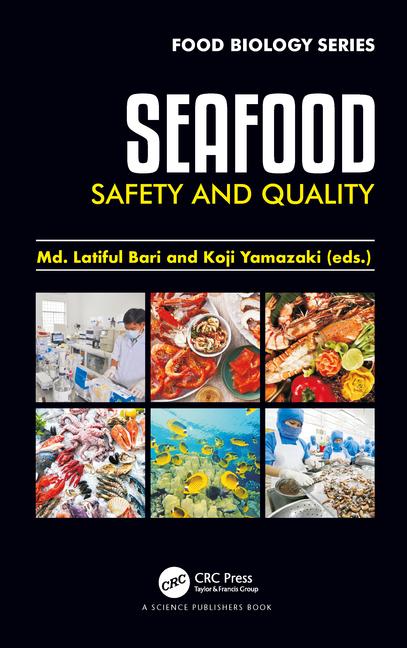WORKER SAFETY
Factoring in Worker Safety
By Lynn Petrak, contributing editor
Employee-safety programs help workers and processing companies stay healthy.
Safety has long been a mantra in the meat and poultry industry, especially in recent years. Although food safety has commanded much of the spotlight in the industry and in the general public, worker safety is the focus of day-to-day operations as well as advances in equipment, tools and training.
There is a reason, after all, why this area is called human resources — a plant’s employees are resources who are integral to the smooth running of a plant and its overall profitability. Accidents or problems among workers on the line or floor can hamper production and cause real harm to valued individuals.
While employee-safety programs are a pivotal part of any manufacturing business, the meat and poultry industry has a unique set of environmental and operational conditions.
For one thing, some employers have found it challenging to recruit and retain workers for the harsh environment, which can be cold and wet and, on occasion, subject to hot water treatments. The work often requires the use of sharp tools and heavy equipment that can lead to injuries or accidents requiring immediate care like stitches or burn relief or long-term care like physical therapy.
Language barriers in these settings, as with other manufacturing facilities, affect employee safety programs, too, since a majority of plant workers are immigrants or foreign-born citizens and many of those speak little, if any, English.
The types of products handled in a meatpacking plant also distinguish the business. “In the meat industry, we take a raw material that is already assembled — and alive — none of which are of ‘standard, size or type. These animals are slaughtered and then disassembled, or reassembled into a variety of meat products,” points out Dan McCausland, director, worker safety and human resources for the American Meat Institute. “Meat plants are much less easily automated due to variation in raw materials and, therefore, much more labor intensive.”
Kevin Bannon, director of marketing for Aires Consulting Group in Chicago, agrees that there are distinctive circumstances — and hence potential human safety issues — in meat and poultry processing facilities. “Other than cuts, the primary injuries are ergonomic issues, like musculoskeletal injuries. And they also have a high turnover rate,” he says.
For better or worse, in fact, the meatpacking industry has been called out as among the most hazardous in the nation. A General Accounting Office report in 2005 indicated that despite decreases in the past 10 years, this industry still has one of the highest rates for injuries and illness of any sector. Adding to the rap that such facilities receive, a group called the Human Rights Watch issued a critical report two years ago called “Blood, Sweat and Fear” that spurred headlines in various trade and consumer media outlets.
Government issue
Negative reports aside, the industry continues to abide by a longstanding commitment to worker safety.
While plants are heavily regulated on the food safety side by the U.S. Department of Agriculture, worker safety falls under the purview of the U.S. Department of Labor’s Occupational Safety and Health Administration agency. OSHA establishes and enforces protective standard and provides resources for employers and employees.
Although OSHA does not often conduct plant visits or inspections, plant operators and safety managers regularly follow OSHA guidelines and recommendations for safety. Such guidelines cover one end of the plant to another. Starting on the receiving side and slaughter floor, possible hazards range from accidental stunning to the falls or injuries while hoisting carcasses. The further-processing area is replete with hazards as well that are addressed by OSHA recommendations, while packaging, storage and retrieval and shipping sections are also subject to potential accidents and covered by various suggestions.
Company owners and industry leaders alike continue to work closely with OSHA to help ensure the safety of meat and poultry plant employees, as they have done for decades. AMI, for its part, has teamed up with OSHA in an alliance. “This alliance provides a means of working cooperatively with federal OSHA, and has been the genesis for a number of activities,” says McCausland. Among the more recent activities, according to McCausland, is an ammonia refrigeration e-tool and powered industrial truck e-tool. The alliance’s work also has resulted in meat industry orientation for OSHA regional offices and a meat industry specific OSHA training program.
Safety locks
As they follow OSHA manuals, plant operators also are taking advantage of new methods and materials aimed at improving employee safety, including tools used in the processing of meat products as well as tools like training programs.
According to McCausland, suppliers and processors have joined forces to improve safeguards deigned to protect employees, in key areas like ergonomics and equipment. “From an ergonomics perspective, it is now common to find equipment available in a variety of sizes and with significant individual adjustment capabilities. This has resulted in a much more ‘ergonomically friendly’ workplace, which was clearly not the case in the past,” he remarks.
To be sure, ergonomic improvements evident in today’s processing vary. Overhead conveyors, for instance, can be lowered to cut down on over-the-head lifting on production lines, while mechanical assists take some of the weight off employees. Knives with ergonomically designed handles are another example.
Bannon also points to new machinery and hand-held tools that are designed to prevent stress injuries like carpal tunnel or back problems associated with repetitive action. “There have been some big improvements in technology,” he says, adding that the way knife stations are designed, for example, addresses frequent usage as well as the prevention of cuts.
In addition to equipment designed in an ergonomic way, new equipment also represents other leaps in worker safety. “There is literally a host of new tools and lift-assist devices. that make the labor-intensive jobs found in slaughter and dressing/fabrication operations much easier than before,” says McCausland.
To that end, there are several examples of machinery and integrated systems that cut out some of the heavy labor involved in certain steps in slaughter and further processing, from automatic loaders and palletizers to controls that allow for proper lockout/tagout or automatic shutoff. Suppliers of protective gear for employees continue to improve their products as well. Mesh gloves, helmets, boots, goggles and arm guards are tweaked in design and material, to keep up with advances in equipment and the effects of other elements like sanitizers.
In addition to investing in new equipment, tools and gear, a processor’s management and staff also can take advantage of services from industry groups like AMI. Among other activities, AMI offers membership in a Worker Safety Committee that holds regular meetings on safety issues and provides a forum for questions regarding safety matters. AMI also sponsors an annual Worker Safety, Health and Human Resources Conference and has established a Web site called WorkerSafety.org for the meat industry.
Beyond taking advantage of industry group membership, meatpacking companies can enlist the help of professional safety consultants to help ensure effective, updated safety programs. Aires Consulting Group, for instance, provides comprehensive safety and health consulting services for manufacturers including meat processing facilities, according to Bannon. “It can be issues like ergonomics or slips, trips and falls, which are issues in plants like these. It could be an airborne issue, with potential pathogens that can be tested,” he says, adding that the extent of consulting services depend on processors, who may or may not have their own in-house employee safety teams.
Finally, the importance of training programs, both new and existing employees, can’t be understated in an industry with high turnover rates. “A lot of companies are going , where it is feasible, to computer-based training modules,” notes Bannon. Such modules are continually updated and available in different languages to suit the needs of a particular employee base.





Report Abusive Comment